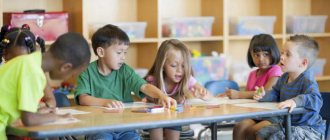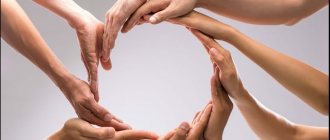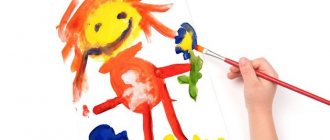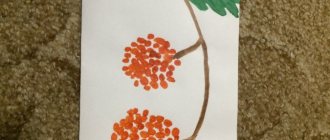Active teaching methods in kindergarten Seminar for teachers. - presentation
Active teaching methods in kindergarten Seminar for teachers
Life in constantly changing conditions requires a specialist to be able to solve new, non-standard problems that regularly arise. A sign of today's times is increased professional pedagogical mobility. New tasks and directions for the development of education also determine special requirements for the personality and professional competence of teachers.
Increasing the professional competence of teachers is based on enhancing their cognitive activity. This helps them to demonstrate independence, “pushes” them to creative search, develops the ability to analyze and make decisions in various problem situations. All new developments are subsequently used in working with children. And, of course, modern pedagogy gives primacy in teaching active methods.
Active teaching methods are a system of methods that ensure the activity and variety of mental and practical activities of students in the process of mastering knowledge.
The task of active teaching methods is to ensure the development and self-development of the student’s personality based on identifying his individual characteristics and abilities, with a special place occupied by the development of theoretical thinking, which involves understanding the internal contradictions of the models being studied.
The theoretical and practical foundations of the problem of using active teaching methods are set out in the works of L. S. Vygotsky, A. A. Verbitsky, V. V. Davydov. Among the starting points of the theory of active teaching methods was the concept of “subject content of activity”, developed by academician A. N. Leontyev, in which cognition is an activity aimed at mastering the objective world.
Thus, active learning methods are learning by doing. L. S. Vygotsky formulated a law according to which learning entails development, since personality develops in the process of activity, which fully applies to preschool children.
In preschool age, the usual form of activity is play, so it is most effective to use it in the educational process. A natural play environment, in which there is no coercion and there is an opportunity for each child to find his place, show initiative and independence, and freely realize his abilities and educational needs, is optimal for achieving these goals.
Game methods provide a search for solutions in dynamic, unstable conditions; they allow you to work out and compare several possible options. An emotional mood, proper motivation and passion remove the impact of artificiality. The pedagogy of cooperation and the joint search for the best solutions make it possible to practice and systematically improve the best options for collective action. From the dominance of the universal slogan “SIS - sit and listen” to the active one: “DID - think and do!” »
Active teaching methods include: - problem situations, - learning through activities, - group and pair work, - business games, - dramatization, theatricalization, - creative game "Dialogue", - "Brainstorming", "Round Table", discussion, -method of projects, -methods of surprise, admiration, confidence, success, -method of heuristic questions, -game design and others.
The project method is one of the teaching methods that promotes the development of independent thinking, helping the child to develop confidence in his own abilities. It provides for a system of education in which children acquire knowledge and master skills in the process of completing a system of planned practical tasks. This is learning through doing.
Relaxation - the goal of this method is to increase the energy level in the group and relieve unnecessary tension that arose during the lesson. As a rule, this can be physical education or an outdoor game.
. It is advisable to use the method of heuristic questions to collect additional information in a problem situation. Heuristic questions serve as an additional incentive and form new strategies and tactics for solving a creative problem. It is no coincidence that in teaching practice they are also called leading questions, since a question successfully posed by the teacher leads the child to the idea of a solution, the correct answer.
Brainstorming is a widely used way of generating new ideas for solving scientific and practical problems. Its goal is to organize collective mental activity to find unconventional ways to solve problems.
Modeling is a teaching method aimed at developing imaginative thinking, as well as abstract thinking; involving the study of objects of knowledge on their substitutes - real or ideal models; building models of real-life objects and phenomena, in particular educational systems. In this case, a model is understood as a system of objects or signs that reproduce some essential properties of the original system, the prototype of the model.
The method of admiring is an emotional form of learning something new. To the music of P.I. Tchaikovsky read the poem Winter Road by A.S. Pushkin, then admired the winter landscapes with the children, admiring the beauty of Russian nature.
The research method is a teaching method aimed at students mastering all stages of problem-search activity, developing research skills, analytical and creative abilities. All stages of problem-search activity are carried out by the child, modeling the research process and obtaining a subjectively new result.
Active learning methods have their own distinctive features: - a group form of organizing the work of participants in the educational process; -use of an activity-based approach to learning; - practical orientation of the activities of participants in the educational process; -game and creative nature of learning; -interactivity of the educational process; -inclusion of various communications, dialogue and polylogue into the work; -use of knowledge and experience of students; -activation of all senses in the learning process; -reflection of the learning process by its participants.
AMOs are distinguished by an unconventional technology of the educational process: - they activate thinking, and this activity remains for a long time, forcing, due to the educational situation, to independently make decisions that are creative in content, emotionally charged and motivationally justified;
— develop partnerships; — increase the effectiveness of learning not due to an increase in the volume of transmitted information, but due to the depth and speed of its processing; — provide consistently high results of training and education with minimal effort from students
The transition to active learning methods begins with the use of interactivity in the educational process. With the help of active learning methods, you can develop the ability to work in a team, carry out joint project and research activities, defend your positions, justify your own opinion and be tolerant of others, take responsibility for yourself and the team.
Thus, the use of active learning methods in the educational process of a preschool educational institution contributes to the successful development of an educational program based on the requirements of the Federal State Educational Standard, the creation of a favorable atmosphere for work in educational activities with students, and the development of motivation for cognitive and research activities; accumulation of one’s own work experience and studying the experience of colleagues, systematic, comprehensive work and the competence of teachers.
MAGAZINE Preschooler.RF
Technologies of active teaching methods in the context of continuity of the standard of preschool and primary general educationToday we continue to talk about a qualitatively new interaction between preschool organizations, based on specially organized joint activities, as a result of which a common point of view is formed on the essence of the problem of continuity and ways to solve it.
The administration of our preschool educational institution and elementary school was faced with the task of organizing work to ensure interaction without breaking the continuity of connections in the goals and objectives, content and methods, forms of organizing training and education, taking into account the development of preschool children based on the pedagogical technologies of the preschool educational institution.
The question arises: What pedagogical technologies of continuous (preschool and primary) education are the actual means of ensuring continuity?
In accordance with the Federal State Educational Standard, among the selected technologies, priority, both in kindergarten and at school, should be given to technologies based on the principles of developmental education.
“What matters most is not whether a student uses new technology, but how that use enhances his or her education.”
S. Ehrmann
Many of the presented technologies are familiar to us and are often used in our work, but as experience shows, they are not effective enough:
- health-saving technologies
- technology of project activities
- research technology
- information and communication technologies
- person-oriented technologies
- technology portfolio
- gaming technology
For quite a long time, being in search of new technologies and forms of work, we finally found...
As they say: while everyone was looking for princes... and we found the King!
Namely, modern AMO technology focused on the standard of preschool and primary general education, which allows you to effectively manage the educational process.
Have you heard about AMO technology?
Having studied AMO technology in detail, you will be able to manage ACTIVELY MOBILE what do you think? Of course, an EDUCATIONAL process!
Active teaching methods are a system of methods that ensure activity and diversity in the mental and practical activities of students in the process of mastering developmental material.
What are the advantages of AMO?
First of all, AMOs are built on a practical orientation, playful action and the creative nature of learning, interactivity, various communications, dialogue and polylogue, the use of knowledge and experience of students, a group form of organizing their work, the involvement of all senses in the process, an activity approach to learning, movement and reflection, which is what the Federal State Educational Standards for Educational Education and Non-Governmental Education require from us.
Active learning methods have their own distinctive features, you can see them on the slide:
- group form of organizing the work of participants in the educational process;
- using an activity-based approach to learning;
- practical orientation of the activities of participants in the educational process;
- playful and creative nature of learning;
- interactivity of the educational process;
- inclusion of various communications, dialogue and polylogue in the work;
- using the knowledge and experience of students;
- involvement of all senses in the learning process;
- reflection of the learning process by its participants.
AMO technology has two main components – structure and content.
According to the structure, in accordance with the technology, the entire educational event is divided into logically related phases and stages, you can see them on the slide:
Phase 1. Start of educational activity
Stages:
- Initiation (greeting, introduction)
- Entering or immersing yourself in the topic (determining the goals of the lesson)
- Determining the expectations and concerns of students (planning the personal meaning of the lesson and creating a safe educational environment)
Phase 2. Working on the topic
Stages:
- Consolidation of the studied material (repetition of what has been covered, discussion of homework)
- Interactive lecture (transmission and explanation of new information by the teacher)
- Studying the content of the topic (group work of students on the topic of the lesson)
Phase 3. Completion of the educational activity
Stages:
- Emotional release (warm-up)
- Summing up (reflection, analysis and evaluation of the lesson)
Each stage is a full-fledged section of an educational event. The scope and content of the stage is determined by the topic and goals of the educational event. Each stage carries its own functional load, has its own goals and objectives, and in addition contributes to the achievement of the overall goals of the educational event. Being logically connected and mutually complementing each other, the phases and stages of an educational event ensure the integrity and consistency of the entire educational process and give a complete look to the lesson.
At each stage of an educational event, its own active methods are used to solve specific problems of this stage.
So, for example, teachers of our preschool educational institution, in the practice of applying the project method, use AMO as a means of activating, diversifying, and interacting the cognitive activity of children. With the help of active learning methods, they develop the ability to work in a team, carry out joint project and research activities, defend their positions, justify their own opinions and be tolerant of others, take responsibility for themselves and the team.
In order to obtain better educational effects, the group’s teachers have drawn up a plan for the phased implementation of active methods in the classroom.
Our students are happy to begin each educational event with a greeting, which creates a positive atmosphere in the group and a mood for educational activities. To do this, we use the methods “Circle of Greetings” , “Smile, Smile!” , “Wishes” , etc.
A smooth transition to the actual content of the lesson occurs at the stage of determining the goals of the lesson. This is a very important moment for our students, since defining goals allows each child to understand what results he can achieve by the end of the lesson and focus on the activities that lead to the planned results. Using active methods “Guess it!” , “Confused” , the goal-setting stage, quite difficult for preschoolers, passes easily and naturally.
Finding out existing expectations and fears about the success of students’ own activities helps us identify children with low self-esteem for subsequent individual work. At the same time, we use the methods “Tree of Expectations” , “Film Reel” , “Backpack and Briefcase” , etc.
We work on the topic in different ways. It depends on the educational area being implemented, the specific activity, its goals and objectives. The active methods used at this stage allow us to hold the attention of children, activate their mental activity, and involve them in team work for the practical development of the studied material.
In the process of correctional and educational activities, we take into account the psychophysical and individual characteristics of our students and do not forget about the restorative power of relaxation and physical exercises. Replacing mental work with a fun warm-up (physical exercise) allows you to relieve psychological stress and recharge with energy and positive emotions to continue learning.
The active methods we use at the stage of summing up, such as “Film Tape” , “Circle”, allow all participants to once again, as it were, pass through everything that happened in the lesson. Our children develop awareness of their actions, a clear understanding of how their efforts contributed to personal achievements and success in the classroom. This strengthens the children’s motivation and self-confidence.
In the process of introducing something new, difficulties always arise. The difficulty for us is the selection of active teaching methods for each stage of the lesson, since there are very few ready-made methods developed for preschool children. Considering that each method must correspond to the goals of the stage, the goals of the entire lesson and the topic of the lesson, we often develop our own active methods or adapt existing AMOs to the goals, objectives of the lesson and the characteristics of our students.
Our experience shows that when interacting with families of pupils, AMO technology is a good assistant in organizing and conducting events. By organizing various events for parents (parent meetings, consultations, living rooms), we use this technology to activate parents and involve them in the process of accompanying the child.
When conducting integrated classes, AMO technology is an indispensable didactic tool. These methods make it possible to develop the thinking of preschoolers, promote their involvement in solving problems in accordance with their age, develop practical skills and abilities, and encourage them to practice and think.
With the help of AMO technology, we effectively correct deficiencies and form a psychological basis for the full development of the child’s personality. When organizing comprehensive and systematic education, children learn forms of communication, master academic and social skills. This gives children relative independence and the greatest possible independence in the world around them.
Thus, the use of AMO technology by teachers in the group creates optimal conditions for the successful preparation of preschoolers for school education.
Literature:
- Dmitry Medvedev. Text of the Address of the President of the Russian Federation (extract), November 12, 2009.
- Pakhomova N.Yu. Project-based learning – what is it? Method from experience. work. Digest of the magazine “Methodist”. / Comp. Pakhomova. Scientific Ed. EM. Nikishin. – M.: AMK and PRO, 2004.
- Polat E.S. New pedagogical and information technologies in the education system. – M., 1999.
| Next > |
Active teaching methods in preschool educational institutions Municipal preschool educational institution - kindergarten in the village of Baskatovka, Marksovsky district, Saratov region Educator of the highest qualified category Emelyanova Nadezhda Vasilyevna 2012
The goal of modern preschool education is the formation of personality through one’s own activities, the development of universal educational actions, cognitive activity, creativity of children and their personalities through various activities.
Today, the learning process (in the classroom and in joint activities) is not a ready-made outline, but a search and co-creation, in which children learn to plan, draw conclusions, and acquire new knowledge through their own activities.
Modern classes are considered as a constantly developing form and are built on the principles of cooperation, an activity-based approach and the use of active forms and methods of learning. It is on this basis that communicative and cognitive universal educational actions are formed: the ability to plan one’s activities, establish cause-and-effect relationships; navigate sources of information.
Children's activity is expressed in actions, in the ability to find ways to solve problems. To generate such activity, it is necessary to use productive methods.
The new educational situation requires the use of methods that ensure a gradual increase in the activity, independence and creativity of children in educational activities. Active learning methods (AML) are in line with new approaches to organizing training.
Active teaching methods are a system of methods that ensure activity and diversity in the mental and practical activities of students in the process of mastering educational material. AMOs are built on a practical orientation, playful action and the creative nature of learning, interactivity, various communications, dialogue and polylogue, the use of children’s knowledge and experience, a group form of organizing their work, the involvement of all senses in the process, an activity-based approach to learning, movement and reflection.
The essence of active learning methods is to ensure that children complete those tasks, in the process of solving which they independently master skills and abilities. Active learning methods are one of the most effective means of involving children in educational and cognitive activities.
Active forms and methods are inextricably linked with each other. Their combination forms a certain type of classes in which active learning is carried out. If active methods are used in classes of a certain form, it is possible to achieve a significant activation of the educational process and an increase in its effectiveness
In preschool age, the usual form of activity is play, so it is most effective to use it in the educational process. A natural play environment, in which there is no coercion and there is an opportunity for each child to find his place, show initiative and independence, and freely realize his abilities and educational needs, is optimal for achieving these goals. The inclusion of active learning methods in the educational process makes it possible to create such an environment both in joint child-adult activities and in children’s independent activities.
Today, children want to play and do not like to do incomprehensible and uninteresting things imposed on them by adults. Children do not like to sit motionless and silent during long, uninteresting classes and memorize a huge amount of information. What needs to be done to change this situation? It is necessary to turn a boring forced activity into an exciting game. The goal and content of the lesson remain the same, but change the motivation, efficiency and quality of work! Introduce new forms and methods of implementing educational programs into common practice, especially since a serious need for this has long existed.
If a habitual and desirable form of activity for a child is a game, then it is necessary to use this form of organizing activities for learning, combining the game and the educational process, or more precisely, using a game form of organizing the activities of students to achieve educational goals. Thus, the motivational potential of the game will be aimed at more effective development of the educational program.
A natural play environment, in which there is no coercion and there is an opportunity for each child to find his place, show initiative and independence, and freely realize his abilities and educational needs, is optimal for achieving these goals.
The inclusion of active
learning methods in the educational process makes it possible to create such an environment both in direct educational activities and in educational activities carried out during routine moments and in independent activities.
Active learning methods are methods that stimulate the cognitive activity of students. They are built mainly on dialogue, which involves a free exchange of views on ways to resolve a particular problem. Active learning methods are characterized by a high level of activity in children. Each method is made active by the one who applies it.
The goal of modern preschool education is the formation of personality through one’s own activities, the development of universal educational activities, cognitive activity, creativity of children and their personality through various types of activities.
Today, the learning process (in direct educational activities, and in educational activities carried out during regime moments) is not a ready-made outline, but a search and co-creation, in which children learn to plan, draw conclusions, and acquire new knowledge through their own activities.
Children's activity is expressed in actions, in the ability to find ways to solve problems. To generate such activity, it is necessary to use productive methods.
The new educational situation requires the use of methods that ensure a gradual increase in the activity, independence and creativity of children in educational activities. Active learning methods (AML) are in line with new approaches to organizing training.
Active teaching methods are a system of methods that ensure activity and diversity in the mental and practical activities of students in the process of mastering educational material. AMOs are built on a practical orientation, playful action and the creative nature of learning, interactivity, various communications, dialogue, the use of children’s knowledge and experience, a group form of organizing their work, the involvement of all senses in the process, an activity approach to learning, movement and reflection.
The essence of active teaching methods aimed at developing skills and abilities is to ensure that children complete those tasks, in the process of solving which they independently master skills and abilities. Active learning methods are one of the most effective means of involving children in educational and cognitive activities.
Today there are various classifications of active learning methods. Sometimes the concepts of AMO are expanded to include, for example, such modern forms of educational organization as problem-based learning, collaborative learning, and educational games.
Indeed, with the help of active methods, problems can be effectively solved. Directly active methods include methods used within an educational event during its implementation. For each stage of educational activity, its own active methods are used to effectively solve specific tasks of the stage.
Methods such as “Gifts”, “Compliments”, “Hello Noses” will help us start activities, set the desired rhythm, ensure a working mood and a good atmosphere in the group.
An example of an AM for the beginning of an educational event “Getting your noses healthy”
" The purpose of AMO is to meet children with each other and greet each other. All children and the teacher participate. Time – 3-4 minutes. Conduct: Children stand in a circle. The teacher invites the children to say hello to as many children as possible by simply saying their name and touching each other with the tip of their nose. After 3-4 minutes, the children gather in a circle again and greet each other with a smile. This funny game allows you to have a fun start to the lesson, warm up before more serious exercises, and helps to establish contact between children.
The next example of an active method is the “Flower-Seven-Flower”
.. This method will allow us to orient children in the topic, present them with the main directions of movement for further independent work. By opening the petal, children will find out what task they need to complete. Thus, all the material is presented clearly and in a clearly structured order, and its key points are highlighted.
Another active method is “Brain attack”
. Brainstorming (brainstorming, brainstorming) is a widely used method of generating new ideas for solving scientific and practical problems. Its goal is to organize collective mental activity to find unconventional ways to solve problems.
During joint activities, an active method such as relaxation
. The purpose of this method is to increase the energy level in the group and relieve unnecessary tension that arose during the lesson. As a rule, this can be physical education or an outdoor game.
“Cafe” method
, with which you can summarize.
The teacher asks the children to imagine that they spent today in a cafe and now the director of the cafe asks them to answer several questions: What did you like best? What else would you eat? What else do you need to add? What have you eaten too much? Of course, only children of senior preschool age can answer these questions. The teacher’s task is to use these questions to find out what the children have learned well and what needs to be paid attention to in the next lesson. Feedback from children allows us to adjust tasks for the future. This way, the lesson will go unnoticed and fun using active learning methods, bringing pleasure to the children and the teacher.









